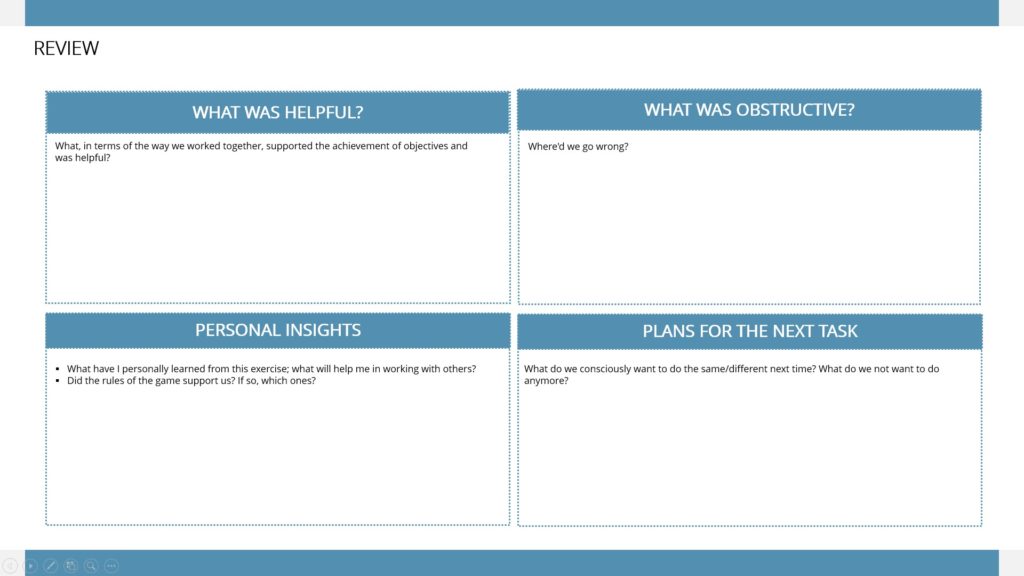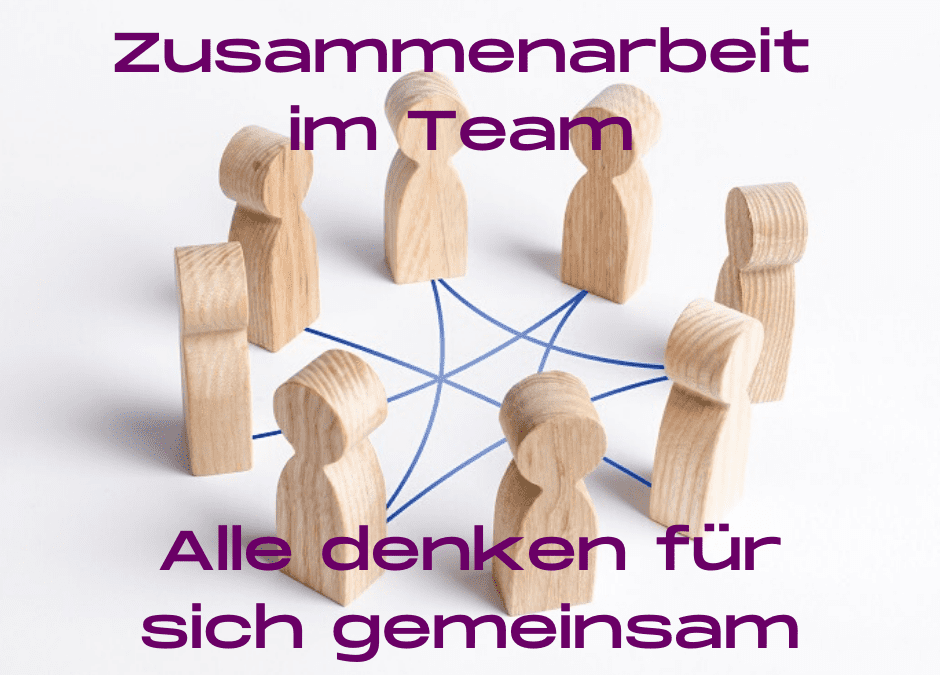If I ask managers or project managers and members in the training how they ensure long-term quality in their cooperation, we very quickly come to the topic of regular flashbacks.
As a rule, such reviews always take place at the end of a project, if at all, and usually only when something has “gone wrong”.
At Coverdale, we work with a feedback and feedback process in the feedback process, in the course of learning from experience. This process not only deals with the weaknesses and failures of the job completion but above all, it is a thorough analysis of what went well, to learn how to repeat this success at any time at your own will.
This success analysis also serves the team members as a basis on which they can build security and strengths for the future, both as a group and as individuals.
The team ensures that learning experiences are implemented
By agreeing on necessary steps (methods, techniques, behaviour), such as incorporating a milestone plan as a time management tool next time. Thus, step by step the development from a small group (individuals working on independent parts of the work) to a functional team (a group of people who agree on a goal and work together to achieve it) is performed.
In training as well as in practice, these flashbacks proceed as follows:
- Working individually, the team members each record what they have experienced as helpful or hindering in the process of cooperation. (It is not a question of “good” or “bad”, but the participants record their very personal perceptions).
- The moderator of the flashback picks up per person the helpful and hindering aspects and visualizes them.
- Depending on the role of the moderator (e.g. as a manager or project manager), the moderator then describes how he or she experienced the cooperation “from the outside”.
- Now that the team members have their “inside view” and an “outside view”, agreements are made for the next order/iteration. The questions for this are:
- What do we want to do/keep next time?
- What will we do differently / no longer do next time?

Depending on how complex the agreements are, concrete plans / To Do’s are agreed upon with the team. An example:
- One obstacle was: time was wasted because not all team members understood what it was all about.
- Agreement: We make sure that all parties understand the objectives of the task.
- Plan: As soon as the new task is formulated at the beginning of the next session, each team member should describe in his or her own words how he or she understands the meaning and objectives of the task.
This flipchart can be used very flexibly: either at the end of a project or after each step of the processing of a project.
The simplicity of this tool allows its use from A4 sheets (for myself or in small groups) to the flipchart to the pinboard (and of course any other electronic device). The process described above must be followed.
The flashback to the result is usually a matter of course for many teams (at the latest after feedback from the customer). Just as important, especially in agile teams and against the background of self-organized work, should be a regular view on the quality of the collaboration.
Yes, this takes some time – at the same time, in the long run, this time is an excellent “investment” in the team.
You can find more information about cooperation on our homepage under training Cooperation


Recent Comments